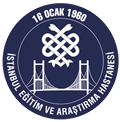ABSTRACT
Introduction:
This study evaluated hand and forearm injuries caused by angle grinders and identify the risk factors.
Methods:
Between 2020 and 2022, 79 patients with hand and forearm injuries due to angle grinder were retrospectively evaluated. Data were obtained from the hospital database and telephone interviews with patients. Age, gender, education level, employment status and work experience, smoking, and alcohol use were recorded. The injury location and structures were evaluated. The time of injury and use of protective gloves were recorded. The Modified Hand Injury Severity Score (MHISS) was used to determine the severity of the injury. The return to work times of actively working patients were recorded.
Results:
Seventy-nine patients with angle grinder injuries were included in the study. All patients were male. Dominant side injury was in 17 (21.5%) patients. The most frequently injured area was the dorsal hand, and the most frequently injured structure was the extensor tendon. The mean MHISS was 49.15 (4-280) and 39 (49.4%) patients had minor injuries. The mean return to work was 7.13 (2-32) weeks. No correlation was found between age, work experience, and MHISS (p=0.167 p=0.389). There was a correlation between the use of protective gloves and MHISS (p=0.002).
Conclusion:
Injuries to the hand and forearm caused by angle grinder usage can result in serious work-related disabilities. These injuries can be reduced by increasing safety precautions and training.
Introduction
Acute traumatic hand and forearm injuries are traumas that lead to significant comorbidities and work disabilities. These injuries are common and have an incidence ranging from 57.4 (1) to 700 per 100,000 individuals (2). The return to work period is prolonged because of pain, post-traumatic stress disorder, and injury-related sequelae. In a study involving 91 patients, the average return to work period exceeded one year in 9% of cases, with a mean duration of 10.5 weeks (3).
One of the causes of acute traumatic hand injuries is the use of industrial tools such as angle grinders (4). Angle grinders are tools used to grind, polish, and cut various hard surfaces, including metal and concrete. Angle grinder injury is most common in the upper extremity after face and head injuries (5). According to data from “the Royal Society for the Prevention of Accidents” Accident Surveillance Systems, angle grinders are ranked as the third most dangerous tool, with 5,400 injuries recorded annually (6).
In this study, we evaluated patients who presented to our clinic following hand and forearm injuries caused by angle grinders and identified risk factors.
Methods
The study was initiated with the approval of Baltalimanı Metin Sabancı Bone Diseases Training and Research Hospital Ethics Committee (approval number: 85, date: 02.08.2023). Verbal consent was obtained from all patients. A total of 589 patients with hand and forearm injuries between 2020 and 2022 were examined. Of these, 79 patients who were injured due to angle grinder were included in the study. The patient data were obtained from the hospital database and telephone conversations with the patients.
Age, gender, education level, employment status, work experience, smoking, and alcohol use were recorded.
It was recorded whether the injured and dominant sides were injured. Injury sites were determined as hand volar, hand dorsal, forearm volar, and forearm dorsal. The injured structures of the patients were recorded from the surgical notes (tendon, bone, vessel, nerve, amputation).
The injury time and use of protective gloves during injury were recorded.
The Modified Hand Injury Severity Score (MHISS) was used to determine the severity of the injury (7). Skin, skeletal, motor, and neurovascular structures were evaluated and graded. The score was doubled for open fractures, crush and avulsion injuries, and dirty wounds. The total score was recorded as <20 minor, 21-50 moderate, 51-100 severe, and >100 major injuries. Finally, the return to work time of actively working patients was recorded.
Statistical Analysis
SPSS 25 program was used for statistical analysis. Descriptive statistical methods (mean, standard deviation, median, frequency, percentage, minimum, maximum) were used to evaluate the study data. Correlation analysis was used to determine the relationship between quantitative data. Statistical significance was accepted as p<0.05.
Results
Seventy-nine patients with hand and forearm injuries due to angle grinder were included in the study. The mean age was 46.08±12.87. All patients were male. The right extremity of Twenty (25.3%) patients and the left extremity of 59 (74.7%) patients were injured, and 17 (21.5%) patients had dominant side injuries.
Forty-three (54.4%) patients had primary school education, 32 (40.5%) patients had high school education, and 4 (5.1%) patients had university education. Sixty-eight (86.1%) patients were actively working and 11 (13.9%) patients were retired. Fifty-three (67.1%) of the injuries were work accidents.
None of the patients received specific safety training on angle grinder use. Seventeen patients stated that they received occupational safety training. Twelve (15.2%) patients were using protective gloves during injury (Table 1).
The injury times of the patients were evaluated at 2 h intervals. The most frequent time of injury was 14.00-16.00 (Figure 1).
Smoking was in 56 (70.9%) patients. The average smoking level was 13 packs/year. Fifteen (19%) patients used alcohol regularly. Alcohol use was in 2 patients at the time of injury.
Injury locations were determined as hand volar and dorsal and forearm volar and dorsal. There were hand dorsal injuries in 49 (62%) patients, volar forearm injuries in 15 (19%) patients, dorsal forearm injuries in 9 (11.3%) patients, and hand volar injuries in 6 (7.7%) patients.
More than one structure was injured in 57 of 79 patients. The most injured structure was the extensor tendon (49 patients) 11 patients had total amputation (Figure 2).
Injury severity was assessed using MHISS. The mean MHISS was 49.15 (4-280). 39 (49.4%) patients had minor injury, 17 (21.5%) patients had moderate injury, 12 (15.2%) patients had severe injury, 11 (13.9%) patients had major injury (Figure 3).
The mean time of return to work was 7.13 (2-32) weeks.
Correlation Analysis
When the correlation analysis was evaluated, no correlation was found between age, work experience, and the severity of injury (p=0.167, p=0.389). There was a correlation between MHISS and the time to return to work (r=0.804, p<001). There was also a correlation between the use of protective gloves and the severity of injury (p=0.002). Since the number of patients who used alcohol at the time of injury was low, the correlation between alcohol use and injury could not be evaluated.
Discussion
Angle grinders are high-speed industrial tools used for processing various surfaces such as metal and wood. When used incorrectly, it can lead to serious injuries (Figure 4).
In this study, we investigated hand and forearm injuries caused by the use of an angle grinder. However, when reviewing the literature, it was observed that facial injuries are the most common. This is attributed to the kick-back mechanism and the failure to use protective equipment (5,8).
Taboadela et al. (9), in their study with 928 patients, mentioned that only 8 patients were female. Approximately 4.96% of the patients had a university education. The most common time for injuries was between 12.00 and 20.00 (9). In the study conducted by Sozbilen et al. (10), 9% of the participants were university graduates, and the most common time for injuries was between 15.00 and 18.00. They also found no correlation between age, education level, smoking, alcohol consumption, and injury severity but identified a relationship with work experience (10). In the study conducted by Sorock et al. (11), which included 1,166 patients from 23 centers, approximately 76.4% of the patients were male, and the average age was 37.2±11.4. In our study, the demographic data were consistent with the literature. We did not observe a correlation between age, years of work experience, and injury severity.
According to the Global Adult Tobacco Survey Turkey 2016 report, 29.6% of the population engages in daily cigarette consumption (12). In our study, this rate is significantly higher within the community, at 70.9%. It is known that smokers tend to have weaker muscle strength and lower fatigue resistance. Nicotine possesses a suppressive property on the startle reflex (13). Additionally, nicotine withdrawal can lead to anxiety, depression, and difficulties in concentration (14). These factors suggest that smoking may increase the frequency of injuries. According to a report from the Turkish Ministry of Health in 2016, regular alcohol consumption in the general population was 12.2% (15). In our study, a similar figure was observed, with 19% reporting regular alcohol consumption. However, the impact of alcohol use during injuries was not examined, as only 2 patients reported alcohol consumption at the time of injury.
In our study, similar to the literature, extensor tendon injuries were observed most frequently. In one study, among 928 patients, extensor tendon injuries were present in 371 (39.9%) (9). Dębski and Noszczyk (6) reported tendon injuries in 56.1% of their patients.
The MHISS was used to assess the severity of injuries. In our study, the average score was 49.15 (range: 4-280), with 39 patients having minor injuries and 11 patients having major injuries. Taboadela et al. (9) reported 24.1% minor injuries and 26% major injuries. Kaya Bicer et al. (16) reported 11.63% major injuries in 43 patients.
Safety training and the use of protective equipment are crucial in reducing angle grinder injuries. In our study, we identified a correlation between the use of protective gloves and the severity of injuries. Sorock et al. (17) reported that out of 1165 patients, 225 (19.3%) used protective gloves, which were found to be protective against lacerations and puncture injuries. Garg et al. (18) also stated that the use of protective equipment reduces traumatic hand injuries.
Traumatic upper extremity injuries can lead to significant loss of work capacity (3). Izadi et al. (19) followed 280 patients for 3 months after injury and found that 45.7% of patients returned to work within 3 months, with an average return-to-work time of 57 days. Marom et al. (20) also reported a 75.3% return-to-work rate within 1 year and an average return-to-work time of 94 days. In our study, the average return-to-work time was 7.13 weeks (range: 2-32 weeks).
Study Limitations
The limitations of our study are that it was retrospective and had no postoperative functional results. However, postoperative functional results could not be evaluated because of the variety of injuries and differences in follow-up periods.
Conclusion
Hand and forearm injuries associated with angle grinder use are serious injuries that can lead to significant morbidity and loss of productivity. Providing specific safety training for this industrial tool and increasing the use of protective equipment can help reduce such injuries.



